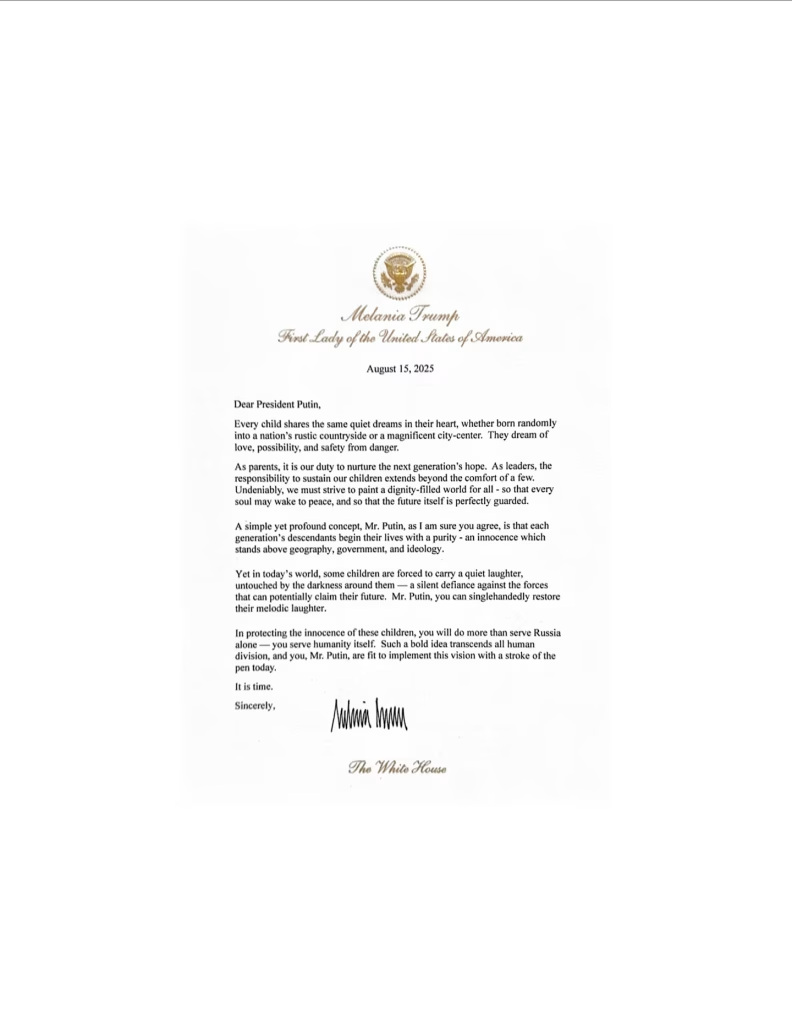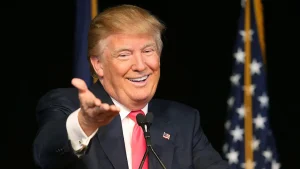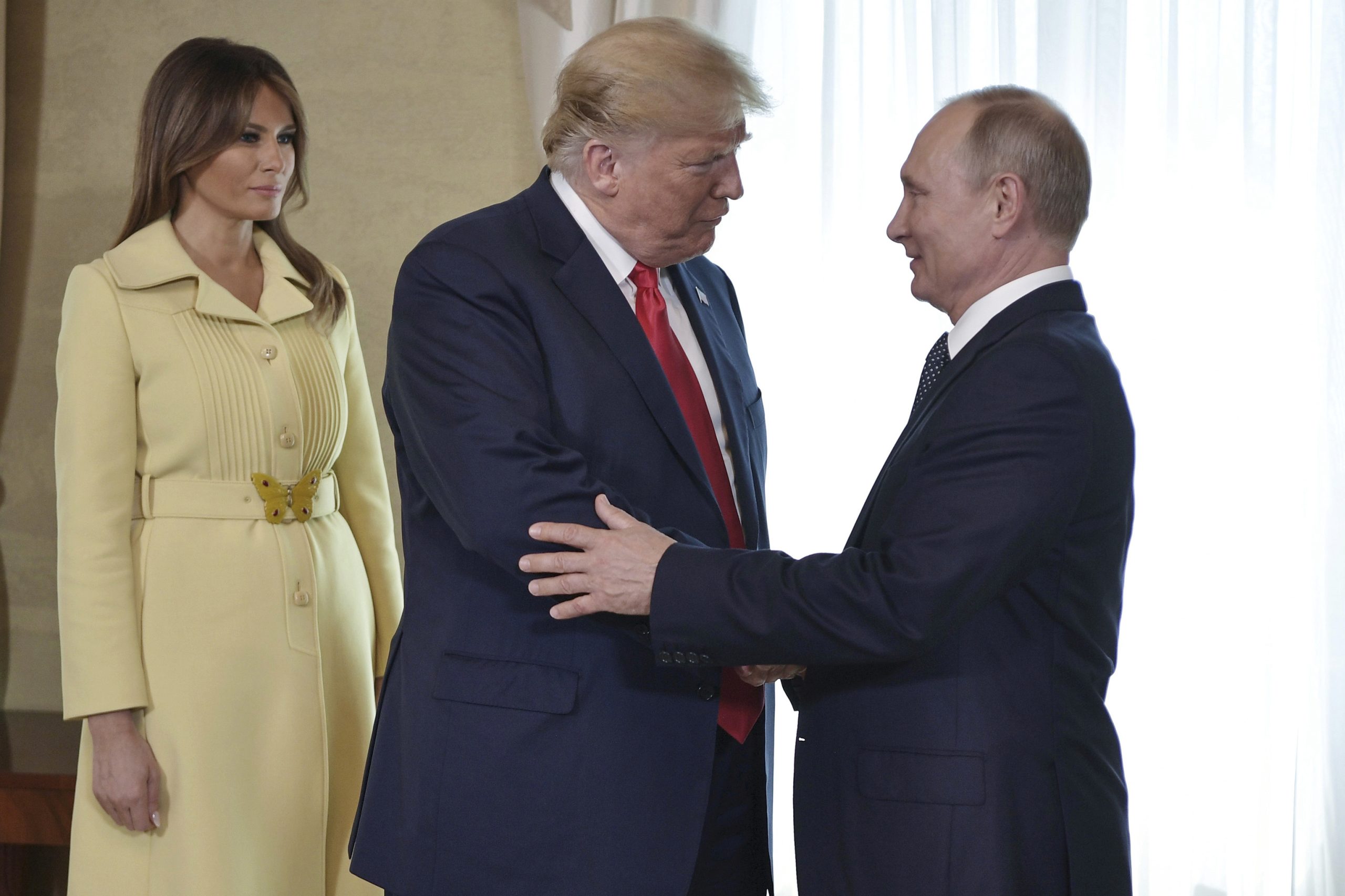A diplomatic gathering that already carried significant global weight took on an unexpected new layer when a personal letter, written by the First Lady of the United States, was revealed to the public. The document, which had been hand-delivered during a recent international summit, was later shared through an official channel, sparking widespread debate about both its message and its authorship.
The timing of the letter’s release was notable. Just days after the high-stakes Alaska meeting between the American and Russian heads of state, the text appeared on the First Lady’s official social media account, accompanied by a caption framing it as a “peace letter.” The publication immediately captured public attention, partly because of its deeply emotional tone and partly because of its unusual nature within the rigid formalities of international diplomacy.
The letter itself carried a poetic cadence, appealing to universal values rather than policy specifics. It opened with a meditation on childhood dreams, emphasizing how innocence transcends borders, ideologies, and governments. From there, it evolved into an appeal for the protection of younger generations, positioning their well-being as a shared responsibility of parents and leaders alike.
Throughout its passages, the author stressed the notion of dignity, safety, and the quiet defiance of children who manage to laugh even amid conflict. At one point, the text turned directly to its recipient, urging him to act decisively for peace and suggesting that such a gesture would not only serve his nation but humanity as a whole. The closing lines were brief and definitive: a call that “it is time” to act.
Reactions to the publication were swift and polarized. Supporters flooded the comment sections with praise, lauding the First Lady’s grace, compassion, and eloquence. Admirers described the text as moving, powerful, and beautifully articulated, arguing that it reflected the kind of humanity often missing from political discourse. For these readers, the letter reinforced the idea that soft power—empathy and persuasion—remains a vital component of international relations.
However, a parallel chorus of skeptics emerged just as quickly. Many doubted that the First Lady herself had written the piece, suggesting instead that it was crafted by aides, professional speechwriters, or even generated with the help of modern technology. Some online users bluntly stated their disbelief, while others mocked the letter’s style as too polished or literary to have come directly from her hand. The speculation became a conversation in its own right, overshadowing the message the letter was originally meant to convey.

The controversy underscored a broader reality about modern politics: the blending of official diplomacy with social media. Traditionally, communications between heads of state and their families remained behind closed doors or were limited to formal addresses. By contrast, the decision to share the letter online transformed it into a piece of public theater—one that invited applause, scrutiny, and memes all at once.
Analysts noted that the letter’s release may have been strategic, designed to humanize tense negotiations by offering a softer, personal dimension. While presidents and prime ministers often communicate through policy and hard bargaining, the presence of a message framed in poetic and emotional language could serve as a complement to more rigid discussions. Whether this had any measurable impact on the outcome of the summit is unknown, but the gesture itself ensured that the event would not be remembered for political dialogue alone.
At the same time, critics warned that blurring the lines between private appeals and public spectacle risks trivializing serious negotiations. By turning what could have been a discreet act of diplomacy into a social media post, detractors argued, the White House exposed itself to unnecessary skepticism and mockery. For them, the episode illustrated how even the most carefully crafted message can lose credibility when its authenticity is questioned.
What remains undeniable is that the letter drew attention. It extended the summit’s reach beyond the conference room and into households around the world, sparking discussions not only about the words themselves but also about the role of first ladies in diplomacy, the limits of public engagement in sensitive matters, and the way technology shapes perceptions of truth.
Whether seen as heartfelt or contrived, the message conveyed ideals that resonate universally: the protection of children, the pursuit of peace, and the responsibility of leaders to act for the greater good. Its reception, however, demonstrated the deep divide in how political figures are perceived, judged, and trusted in the digital age.
As with so many aspects of modern international affairs, the long-term impact of this letter remains uncertain. What is clear is that it became a moment of symbolic importance, intertwining personal appeal with political theater, and ensuring that the summit’s legacy will be remembered as much for the words of a First Lady as for the policies debated by presidents.

James Jenkins is a celebrated Pulitzer Prize-winning author whose work has reshaped the way readers think about social justice and human rights in America. Raised in Atlanta, Georgia, James grew up in a community that instilled in him both resilience and a strong sense of responsibility toward others. After studying political science and creative writing at Howard University, he worked as a journalist covering civil rights issues before dedicating himself fully to fiction. His novels are known for their sharp, empathetic portraits of marginalized communities and for weaving personal stories with broader political realities. Jenkins’s breakout novel, Shadows of Freedom, won national acclaim for its unflinching look at systemic inequality, while his more recent works explore themes of identity, resilience, and the fight for dignity in the face of oppression. Beyond his novels, James is an active public speaker, lecturing at universities and participating in nonprofit initiatives that support literacy and community empowerment. He believes that storytelling is a way to preserve history and inspire change. When not writing, James enjoys jazz music, mentoring young writers, and traveling with his family to explore cultures and stories around the world.









